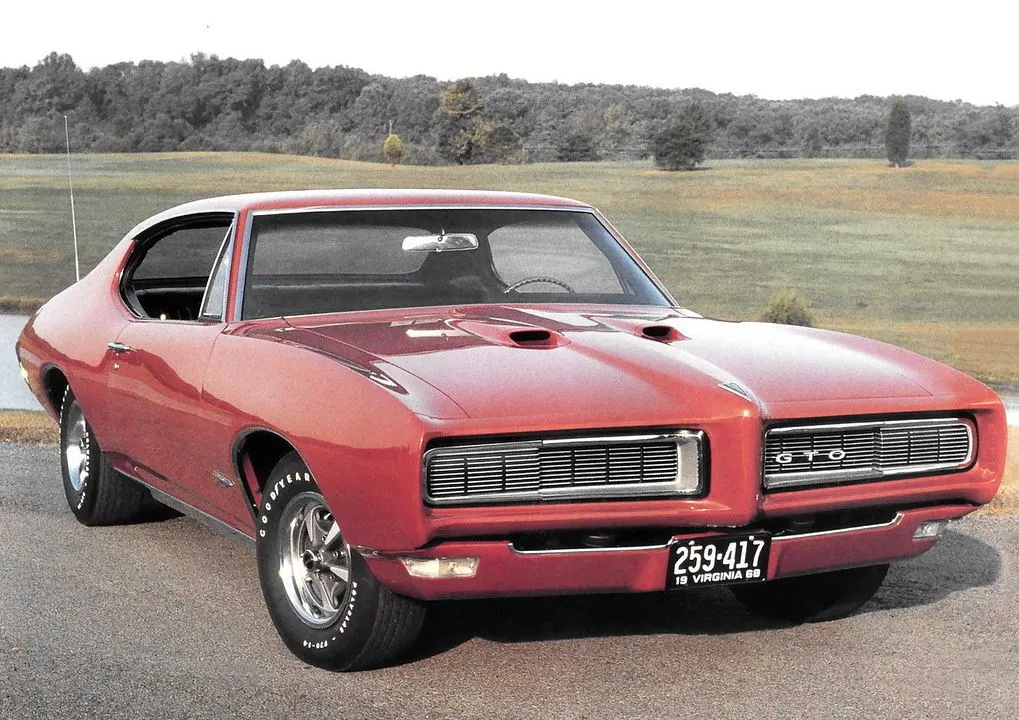The 1990 BMW M3 marked the culmination of an era. It was the swan song of the beloved E30 chassis, a car that redefined the sports sedan segment and cemented BMW's reputation for performance engineering. This wasn't just another M3; it was the M3 Evolution, a limited-production masterpiece that pushed the boundaries of what a four-door could achieve.
Body Color: Sterling Silver Metallic
Engine Size: 2.3-Liter S14 Inline-Four
Transmission Type: Five-Speed Manual Transmission
(Scroll down for more videos & photos)
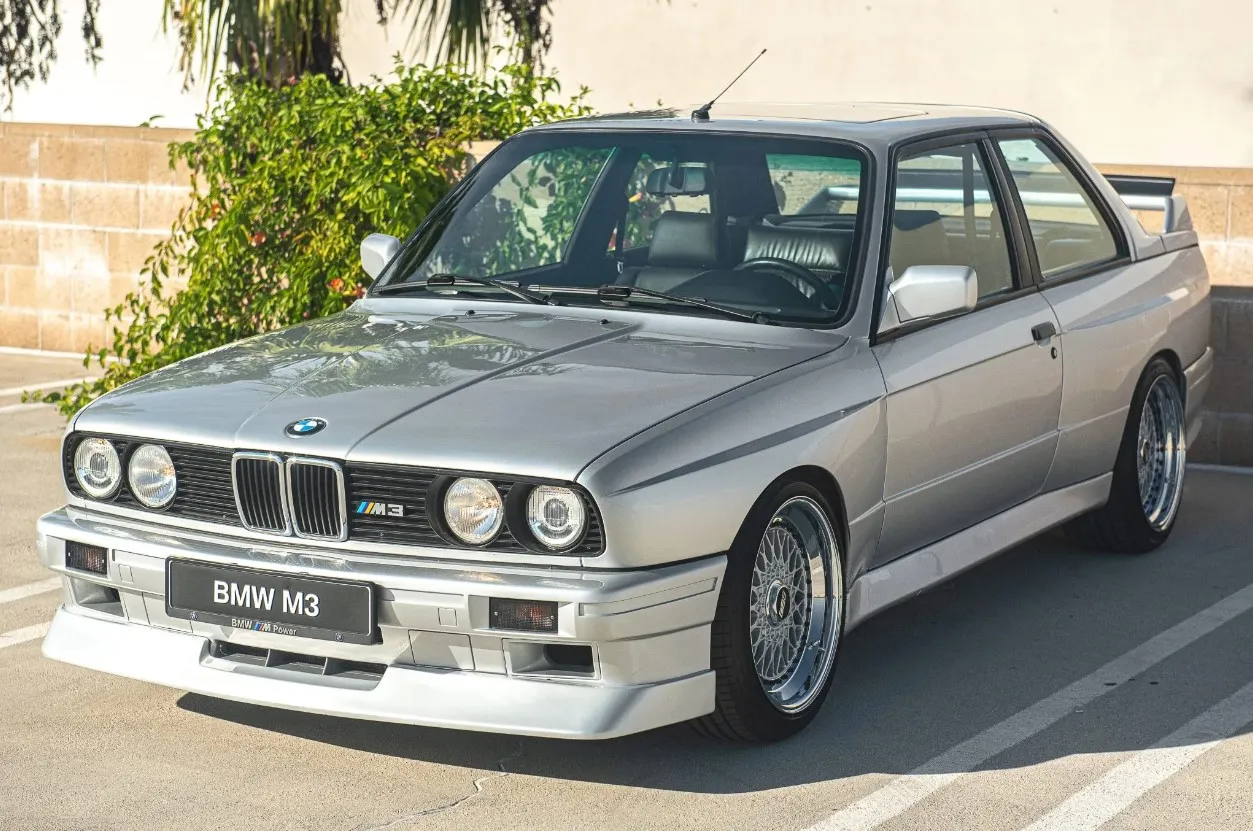
The E30 Legacy: A Motorsport Pedigree

The E30 3 Series debuted in 1984, quickly establishing itself as a driver's dream. Its lightweight handling, sharp steering, and responsive suspension made it a joy on winding roads. But BMW Motorsport, the brand's performance skunkworks, saw even greater potential. They took the 3 Series platform and injected it with a potent dose of motorsport magic.

The first M3, launched in 1986, was a revelation. Its 2.3-liter four-cylinder engine, derived from the existing 325i motor, was extensively reworked. It churned out a remarkable 197 horsepower, a significant leap at the time. This, coupled with a close-ratio 5-speed manual transmission, limited-slip differential, and a series of aerodynamic enhancements, transformed the 3 Series into a track-focused weapon.
The Evolution Emerges: More Power, More Performance
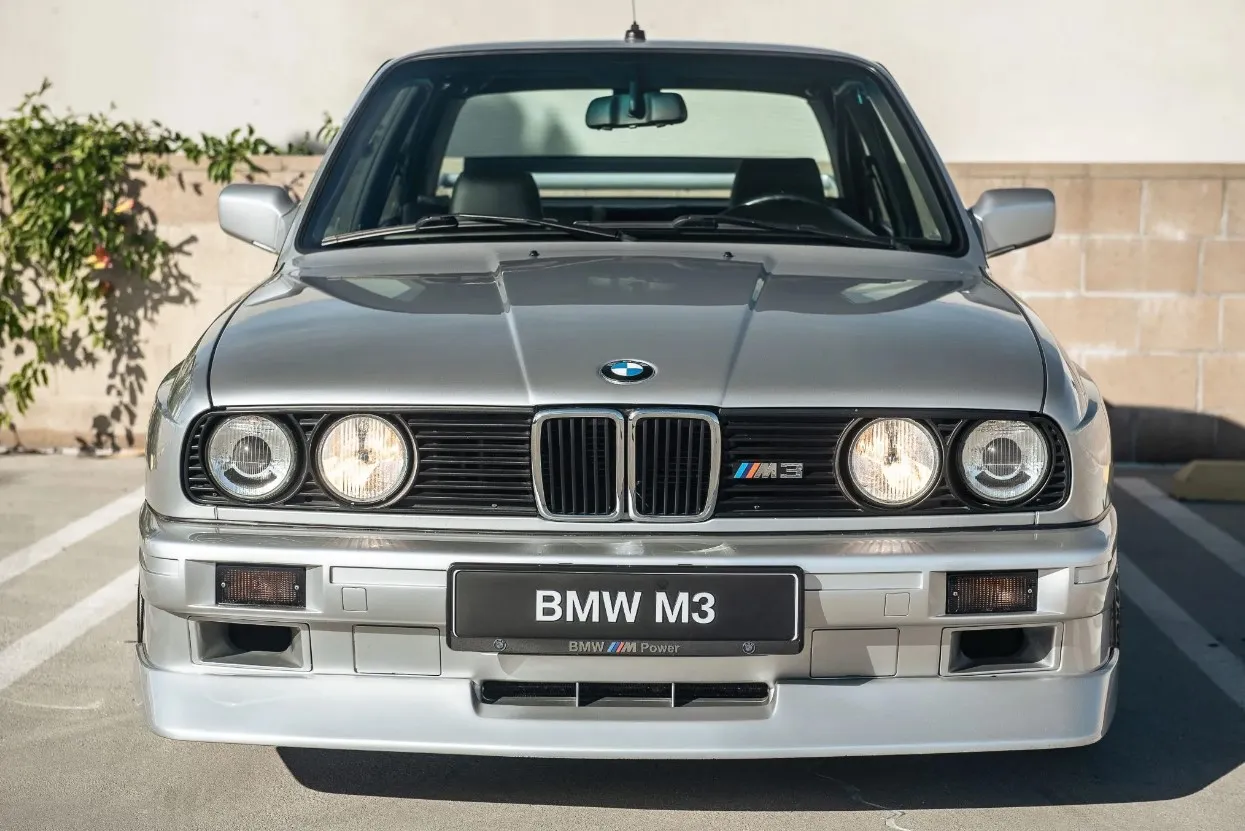
The 1990 M3 Evolution took things a step further. Recognizing the E30 platform's near-peak potential, BMW Motorsport focused on extracting even more power. The engine displacement was bumped to 2.5 liters, resulting in a jump to a thrilling 238 horsepower. This seemingly small increase translated to a noticeable difference in acceleration, pushing the 0-60 mph time to a sub-6-second range.
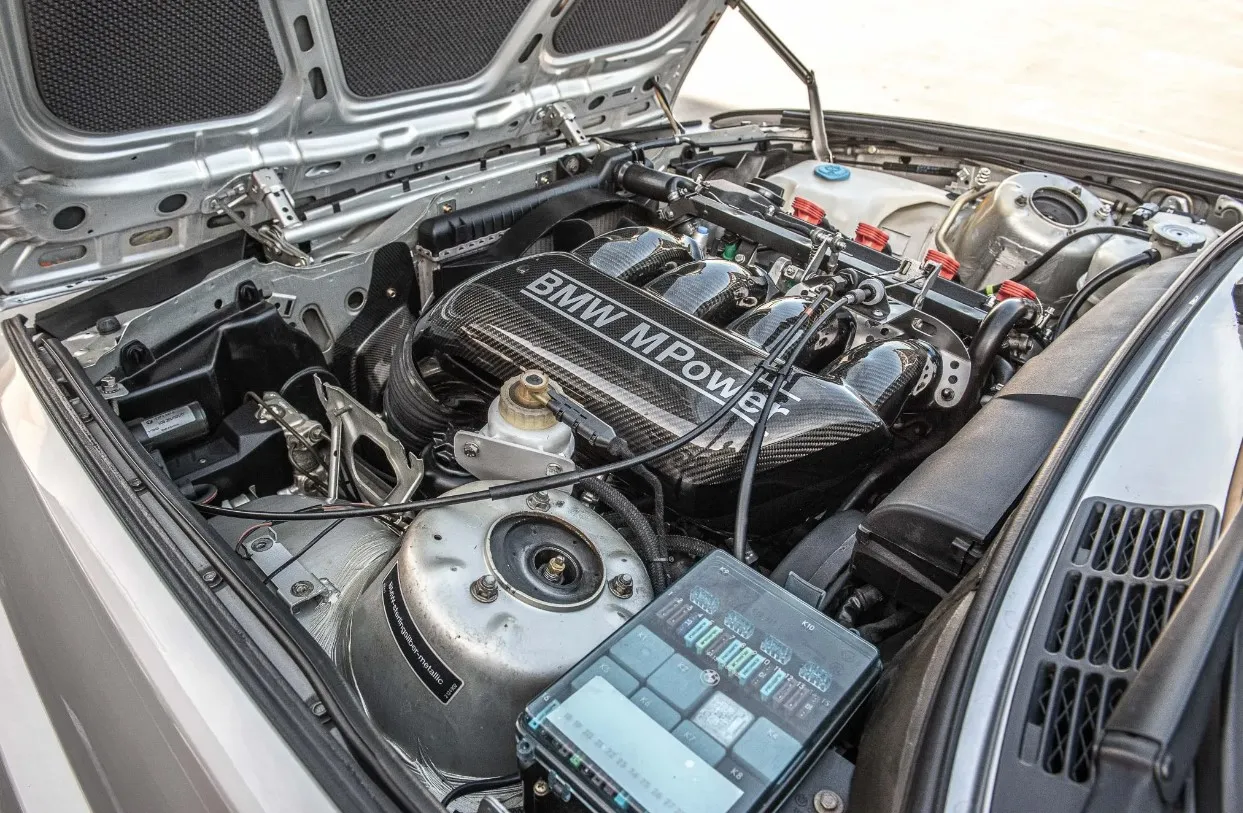
But the Evolution wasn't just about brute force. The engineers meticulously tweaked the valvetrain, camshafts, and intake system for improved breathing and responsiveness. The suspension received a further tuning, with stiffer springs and revised dampers, sharpening the car's handling without sacrificing ride quality.
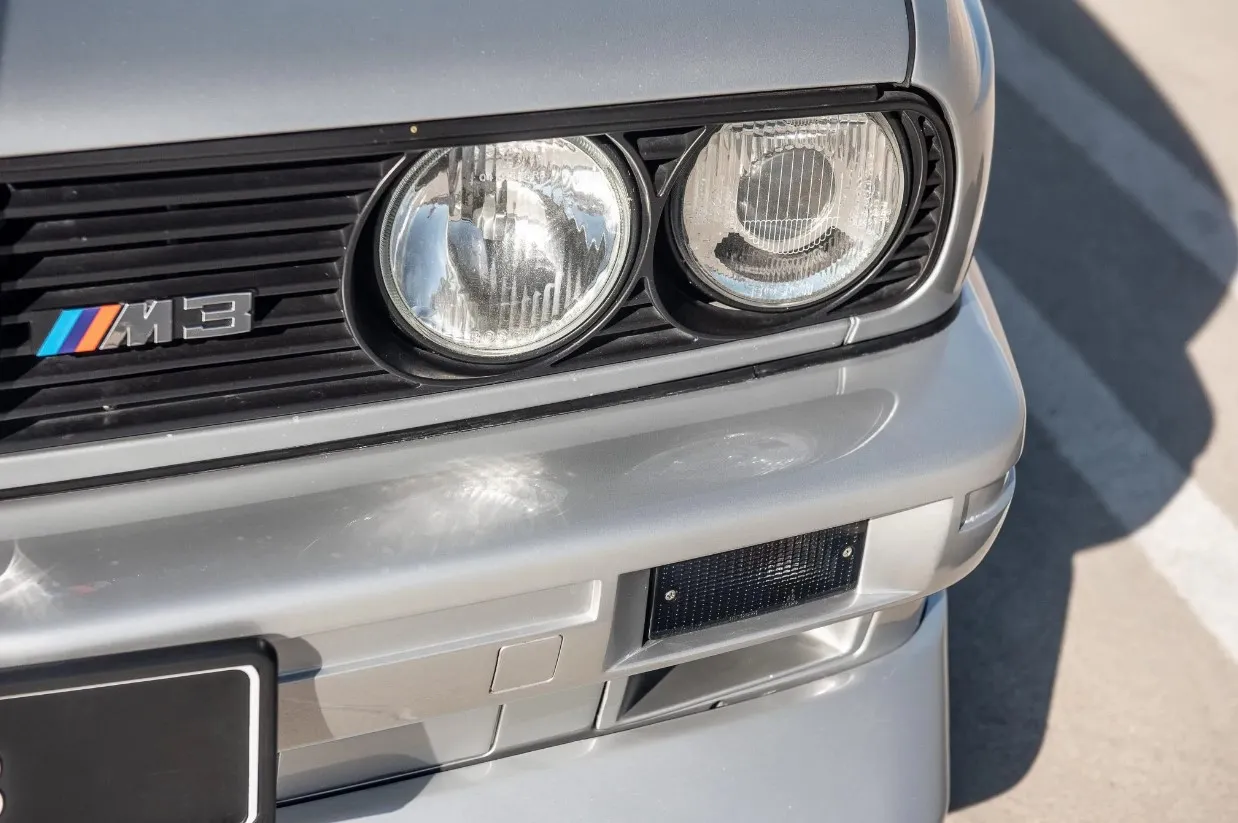
Visually, the Evolution distinguished itself with a larger rear wing for increased downforce at high speeds. Subtler changes included a motorsport-inspired front bumper with enlarged air intakes and a tri-color Motorsport badge on the front grille. Inside, the cabin remained largely unchanged, retaining the classic E30 layout with bolstered sports seats and a driver-focused cockpit.
Interior and Features: A Driver-Focused Environment
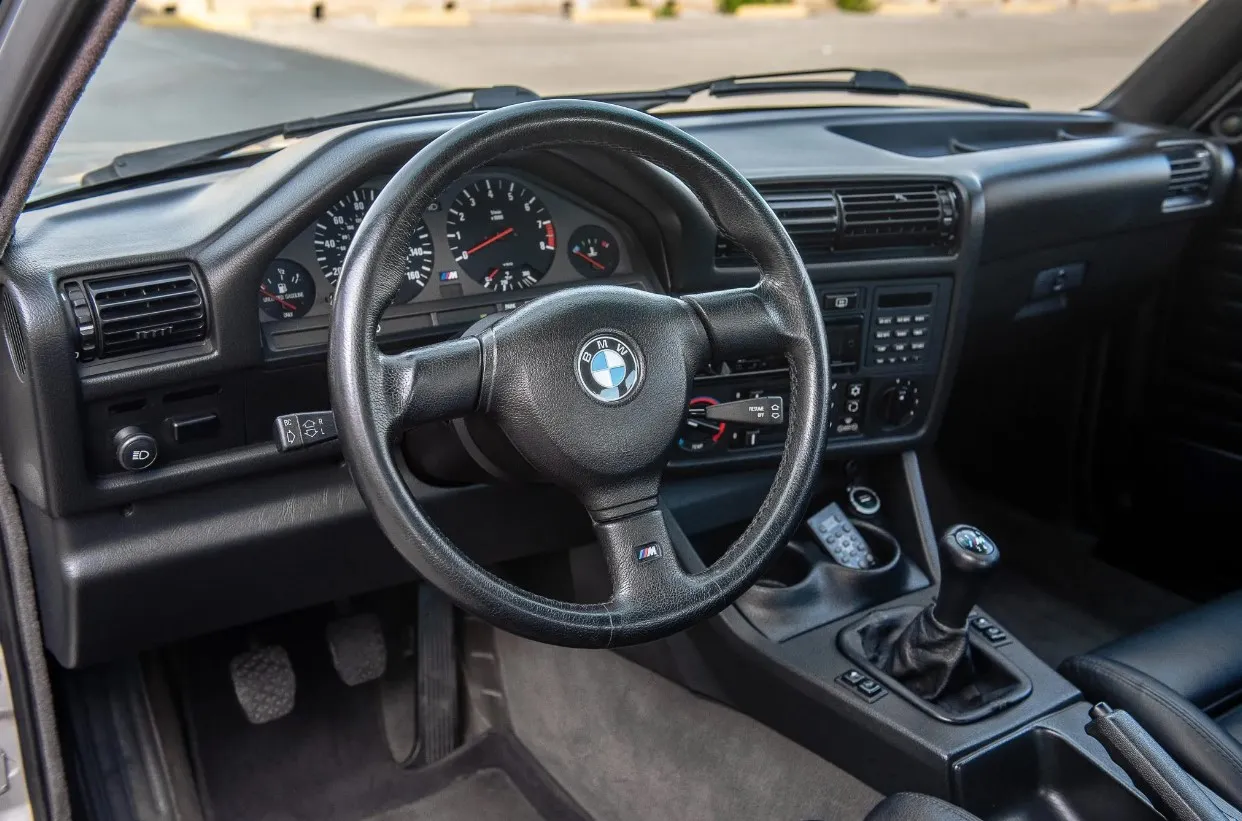
The interior of the 1990 BMW M3 Evolution remained largely unchanged compared to the standard E30, prioritizing functionality and driver engagement over excessive luxury. However, subtle touches throughout the cabin hinted at the car's performance pedigree.
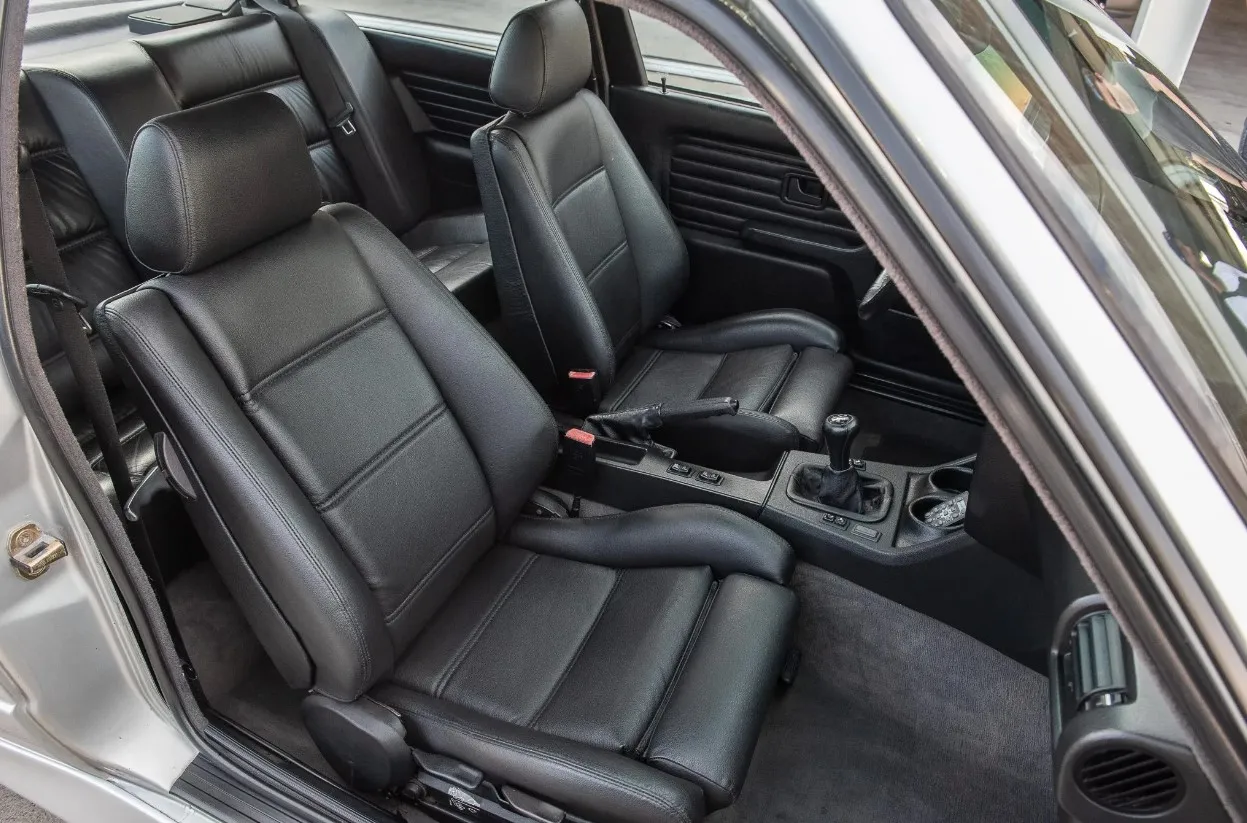
The cockpit was a testament to BMW's focus on the driver. The bolstered sport seats, trimmed in a combination of leather and M-Tech cloth, offered excellent support during spirited driving. The three-spoke steering wheel, wrapped in Alcantara for a grippy feel, housed the iconic M badge at its center. The instrument cluster, with its clear gauges and red needles, provided all the necessary information at a glance.
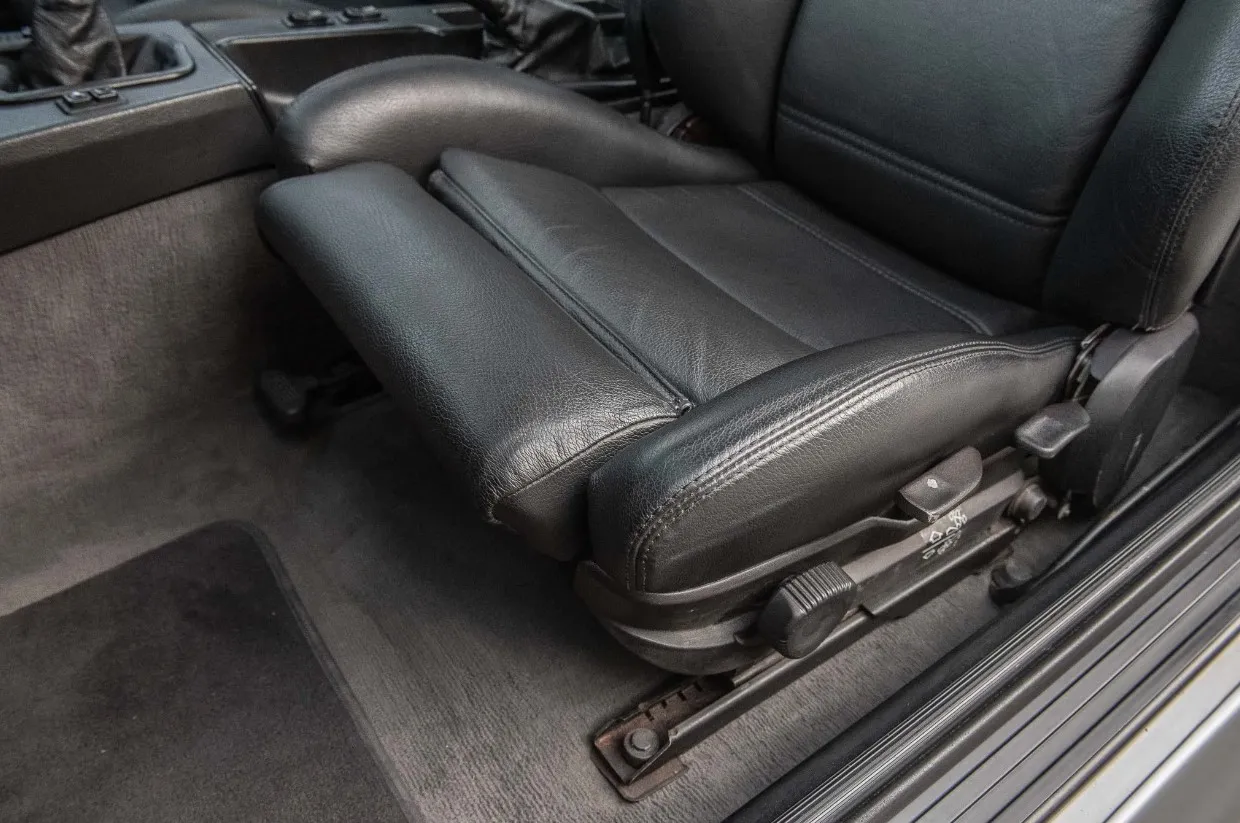
While the overall layout remained familiar, M-specific elements distinguished the Evolution's interior. The aforementioned Alcantara steering wheel and M-Tech cloth inserts on the seats added a touch of sportiness. The shift knob, also wrapped in Alcantara, featured the M logo for a constant reminder of the car's performance pedigree. Some Evolution models came equipped with red seatbelts, a bold visual cue that further emphasized the car's motorsport heritage.
Limited Edition Status: A Collector's Dream

The 1990 BMW M3 Evolution was a homologation special, built to meet racing regulations. Only 600 units were produced, making it an instant collector's item. Today, these cars are prized possessions, fetching high prices at auctions and generating fierce bidding wars among enthusiasts.
Driving the Legend: A Timeless Experience

Stepping behind the wheel of a 1990 M3 Evolution is a nostalgic journey. The high-revving four-cylinder delivers a thrilling soundtrack, urging the driver to push its limits. The close-ratio gearbox and light clutch provide a satisfyingly mechanical connection to the car's performance. The steering is precise and communicative, offering exceptional feedback through corners.

Despite its age, the M3 Evolution remains surprisingly capable. Modern sports cars may boast superior horsepower figures, but the E30's agility and driver engagement create an experience unmatched by many new machines. It's a constant reminder of why the E30 M3 earned its reputation as a giant slayer, taking down V8-powered rivals on the racetrack.
Owning a Piece of History: Considerations for Today's Drivers

The allure of the 1990 M3 Evolution is undeniable. However, owning a classic car comes with its own set of challenges. Finding a well-maintained example in good condition can be difficult, and parts availability may be limited. Maintenance costs can also be higher compared to modern cars, requiring specialized knowledge and mechanics familiar with the E30 platform.
Fuel efficiency is another factor to consider. The high-strung nature of the 2.5-liter engine translates to lower gas mileage compared to contemporary offerings.

But for those who prioritize driving pleasure and historical significance, these challenges become secondary. Owning a 1990 M3 Evolution is more than just having a car; it's about connecting with a legendary era of automotive performance.
The E30 M3's Legacy: A Lasting Impact

The 1990 BMW M3 Evolution marked the end of an era, but its legacy continues to inspire generations of car enthusiasts. It solidified the M3's position as a benchmark for high-performance sedans, a standard that future iterations would strive to uphold. The E30 M3, in all its iterations, left an indelible mark on the automotive world, shaping the sports sedan segment and influencing countless performance cars that followed.
Video Gallery
Photo Gallery


































